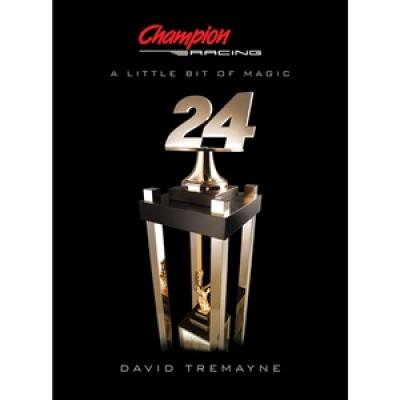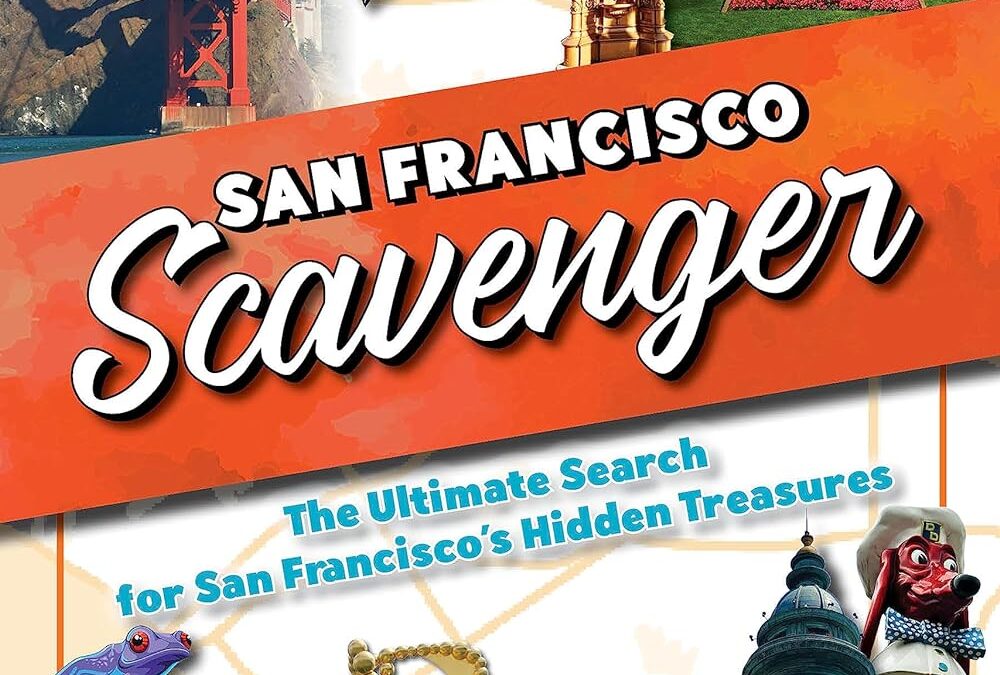
San Francisco lures people in search of a wide variety of treasure: fame, wealth, property, inspiration, love, family, community, freedom, and a fresh start. With this book in your hands, you hold a treasure map to the history of the City by the Bay―from its earliest days to more modern times. Solve 360 rhyming clues that take you on a scavenger hunt through 19 different neighborhoods across the 49 square miles of San Francisco. Each riddle includes a photo to help you find museums, public artworks, historical sites, bars and restaurants, architectural highlights, and more. Whether you love the thrill of solving a puzzle, have a desire to learn a little history, feel the urge to get out and explore, or even rediscover a city you thought you knew, find the true spirit of San Francisco in the pages of this book. Author and travel journalist Jill K. Robinson left her heart in San Francisco in her earliest childhood years. She brings her years of research, love for the city, and countless hours of exploring to this epic scavenger quest. Come with an adventurous spirit, and whether you solve the clues alone or with family and friends, this creative excursion will help you unlock the secrets of San Francisco.
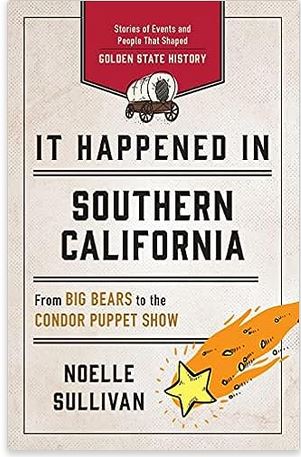
Best known for its movie industry, surfing, and amusement parks, Southern California boasts an environment of glamour, both natural and man made. It Happened in Southern California tells the stories of intriguing people and events from the history of this region—from the first ships to arrive in San Diego in 1769 to the Watts Riots of 1965.
Follow a brave little band of multiracial settlers in 1781 up the California coast to a new frontier town today known as Los Angeles. Go back to the Chinatown war of 1871, which some say was sparked by love, but others knew for what it was: a battle over race and money. Learn about the “puppet show” in 1988, performed not for kindergartners but for a baby condor destined to fly wild and free over Southern California’s skies. It Happened in Southern California describes everything from the efforts of the first Spanish colonialists to the reintroduction of endangered condor.
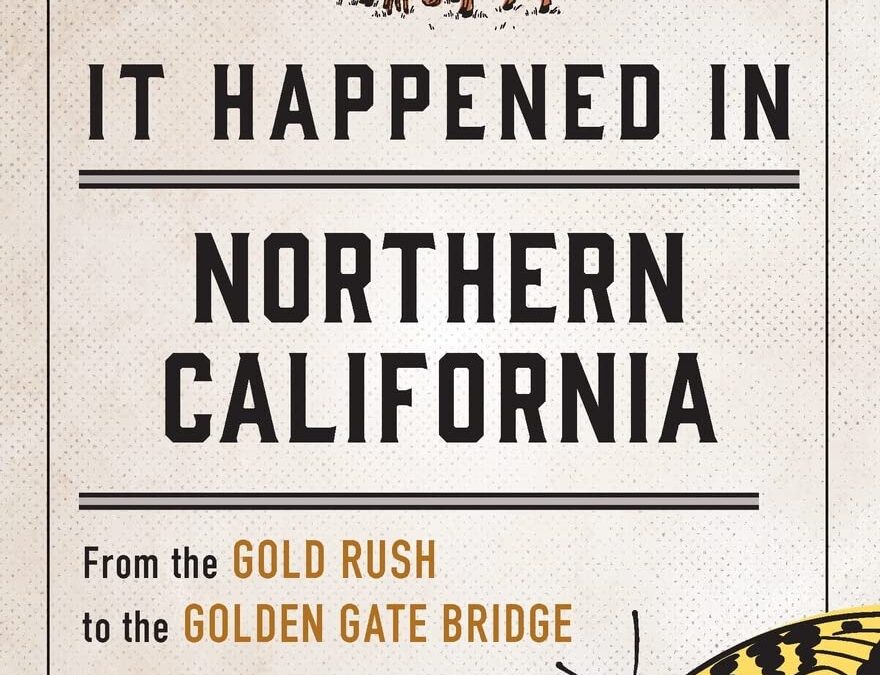
It Happened in Northern California takes readers on a rollicking, behind the scene look at some of the characters and episodes from the state’s storied past. Including famous tales, famous names as well as little known heroes, heroines, and happenings.
Northern California is well known for its towering redwoods, Spanish missions, and gold mines, but few know about the two-year-long Native American occupation of Alcatraz, efforts by some northern Californians to establish the US’s fifty-first state, or that John Sutter never capitalized on the gold rush that began on his land. It Happened in Northern California goes behind the scenes to tell these stories and many more, in short episodes that reveal the intriguing people and events that have shaped the Golden State.
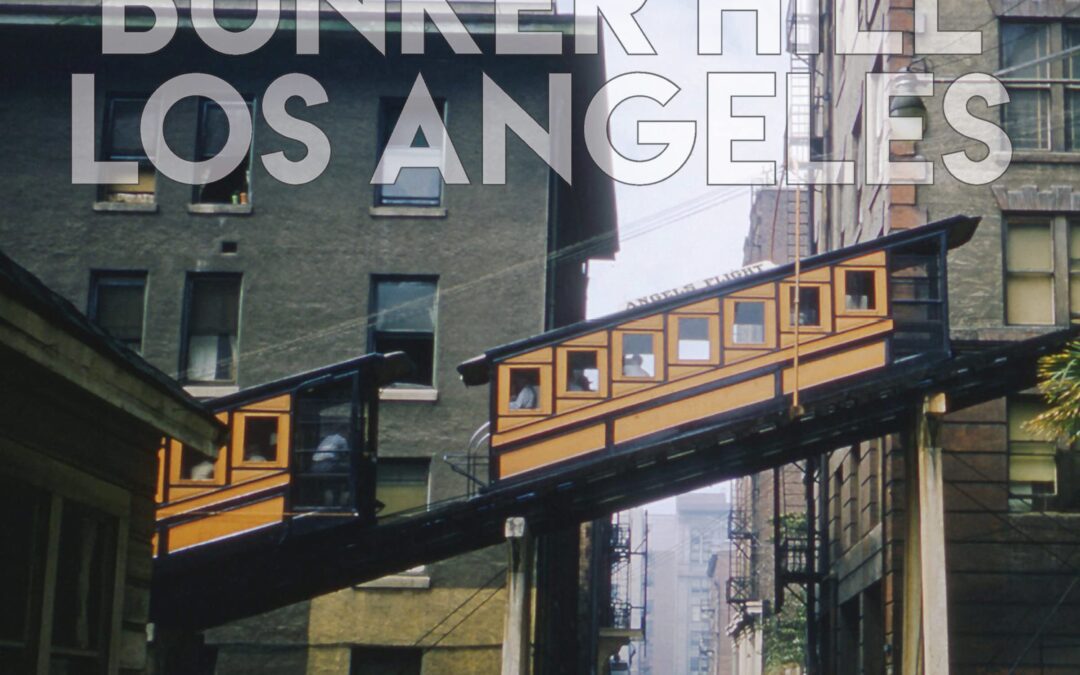
Bunker Hill is the highest point of downtown Los Angeles, both literally and figuratively. Its circle of life has created a continuous saga of change, each chapter rich with captivating characters, structures, and culture. In Bunker Hill Los Angeles: Essence of Sunshine and Noir, historian Nathan Marsak tells the story of the Hill, from the district’s inception in the mid-19th century to its present day. Once home to wealthy Angelenos living in LA’s “first suburb,” then the epicenter of the city’s shifting demographics and the shadow and vice of an urban underbelly, Bunker Hill survived its attempted erasure and burgeoned as a hub of arts, politics, business, and tourism.
As compelling as the story of the destruction of Bunker Hill is―with all the good intentions and bad results endemic to city politics―it was its people who made the Hill at once desirable and undesirable. Marsak commemorates the poets and writers, artists and activists, little guys and big guys, and of course, the many architects who built and rebuilt the community on the Hill―time after historic time.
Any fan of American architecture will treasure Marsak’s analysis of buildings that have crowned the Hill: the exuberance of Victorian shingle and spindlework, from Mission to Modern, from Queen Anne to Frank Gehry, Bunker Hill has been home to it all, the ever-changing built environment.
With more than 250 photographs―many in color―as well as maps and vintage ephemera to tell his dramatic visual story, Marsak lures us into Bunker Hill Los Angeles and shares its lost world, then guides us to its new one.

When Leo Mason traded a career in advertising for a shot at becoming a professional photographer in 1974, he set four goals for his new life, declaring that it should be both fun and financially viable; that it must involve traveling the world, meeting interesting people; and that his photography must be just a little better than average. Leo was aiming high, yet in his own words: ‘That’s pretty much how everything worked out.’
Leo’s love for photographing the sporting world’s greatest moments is plain to see – from a surreal experience with Sir Richard Noble’s Thrust 2 team out on the Bonneville Salt Flats and shooting US Open tennis from a never-before-seen overhead viewpoint, to capturing dramatic America’s Cup racing from a helicopter and spending a career-defining week with Muhammad Ali.
Not only filled with famous faces from the sporting world, this book is also a visual record of Leo’s creative and technical journey, his transition from film to digital, as well as his recollections of the times spent capturing these moments. He has led an extraordinarily interesting life, as many of the stories and anecdotes behind his images attest. Leo’s passion, craft and creative eye for the unusual are evident on every page, and his hugely significant contribution to the historical sporting record is his enduring legacy.
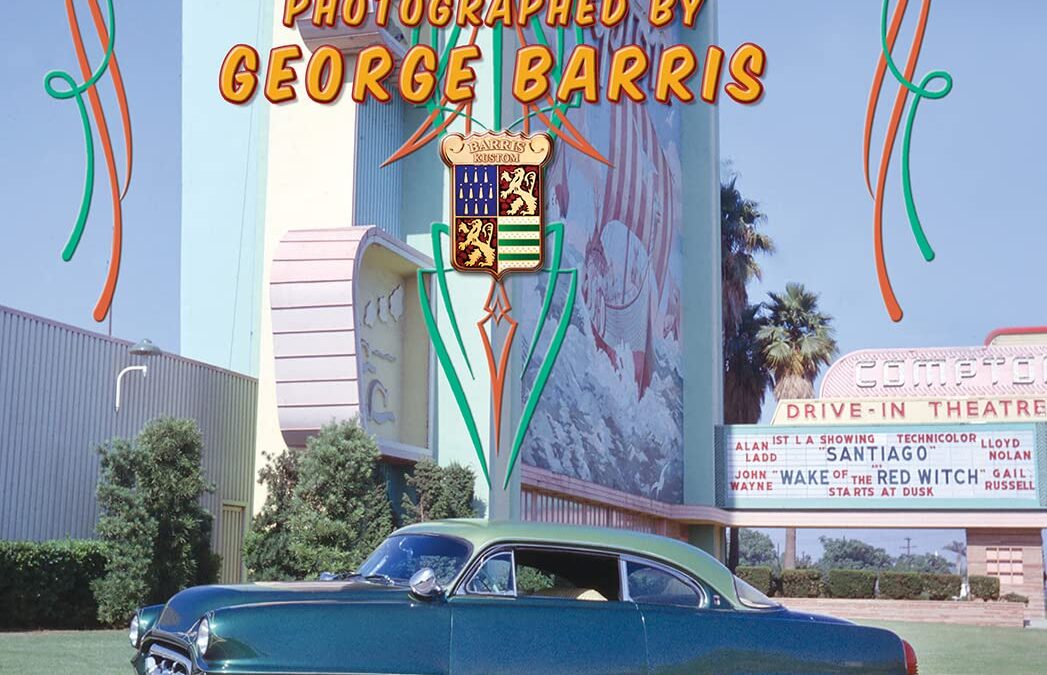
George Barris is indisputably the “King of the Kustomizers,” the most phenomenal kustom car builder ever.
This book collects the incredible photos of early hot rods and custom cars taken by George Barris in the 1950s to early ’60s.
As a sculptor of cars, George Barris knew well the angles and lighting that would bring out the beauty of these creations, both his own and those of others.
A treasury of images, the photographs in this volume capture the early parts of the kustom culture movement, when people wanted to stylize their cars and make them look more sleek, different, powerful and personal.
Early Hot Rod and Kustom Kulture features hundreds of photos including notable customizers from all over the country, in addition to Barris’ own creations. Many of these unique photographs have never been seen before. Barris also photographed the people and personalities of this iconic time, capturing builders and owners, as well as pinups and models.
George captured all the styles of the early era of customs and hot rods, both East Coast and West Coast, reflecting the wide range of trends and scenes. A beautiful collection seen through the lens of master customizer George Barris.
Kustom Photography
George Barris began making custom cars in the early 1940s with his brother Sam. George bought a German-made twin lens reflex Rolleiflex camera and began photographing cars as a way to promote his business. It then became a way to educate other kustomizers. George recorded and wrote how-to stories offering information and photos on kustomizing techniques, sharing his work as well as that of other builders from all over the country. George captured thousands upon thousands of moments in time when the beauty, style or sheer outrageousness of an automobile was visible only to a gathered crowd.
George Barris’ artful documentation of early car culture serves as an important chronicle of custom car history, capturing the best the best of burgeoning hot rod and kustom kulture.
His first work to appear in print was virtually concurrent with the beginning of auto enthusiast magazines known as “little pages” such as Hot Rod, Car Craft, Custom Cars, Hop up, Rod & Custom, Motor Life, Spotlite and others. Although much of his fame surrounds the incredible kustom cars he built, George’s endeavors as a photographer are just as important as any other facet of his life.
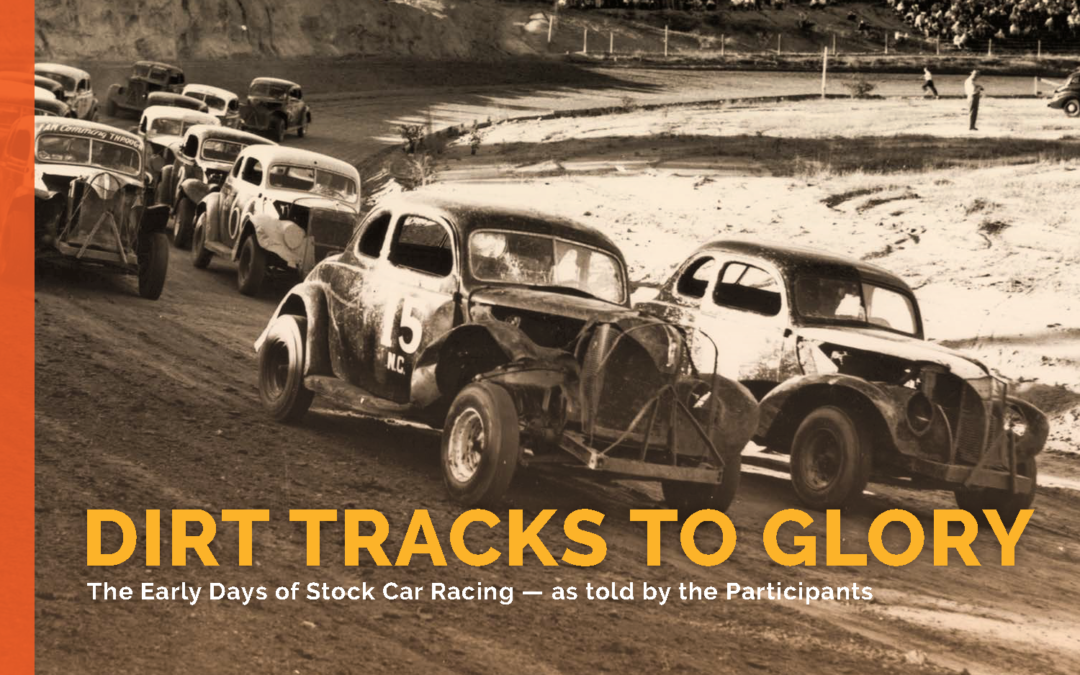
In this all-new edition of Dirt Tracks to Glory we return to the very personal and often hilarious inside stories of sharp-witted people who became legends in the early days of NASCAR. Bill France Sr, Humpy Wheeler, Curtis Turner, “Little Joe” Weatherly, Glenn “Fireball” Roberts, the Flock Brothers, Banjo Matthews, Smokey Yunick and a host of others emerge from these pages with their personal reflections and wry commentary on the way it was in the days of “haulin shine”, bangin’ fenders and out-smartin’ the other hot-shoes on Saturday nights.


Richly illustrated and entertainingly written, The Big Book of Tiny Cars presents lively profiles of the automotive world’s most famous—and infamous—microcars and subcompacts from 1901 to today.
From tiny homes to little lending libraries and even tiny food, people everywhere are resetting the premium they put on size. Fact is, the automotive industry has a “tiny” history going back to the car’s earliest days.
Beginning with the Curved Dash Oldsmobile and continuing through prewar classics such as the Austin Seven and Hanomag Kommissbrot, The Big Book of Tiny Cars is truly international in scope. Witness diminutive cars like the Bond Minicar and the BMWIsetta introduced to fuel-deprived postwar Europe, and continue through the classic 1950s microcars and ’70s subcompacts, right up to today’s tiny cars and electric vehicles (EVs) fromthe likes of Smart and Fiat.
In addition to iconic curiosities like the frog-like Goggomobil Dart, the futuristic Sebring Vanguard Citicar, and the three-wheeled Reliant Robin, you’ll read about more familiar classics like the VW Beetle, MiniCooper, and Crosley Super Sport. Other manufacturers represented include Honda, Datsun, Mitsubishi, Trabant, Heinkel, Renault, and Messerschmitt, to name a few.
- Each car is profiled with an entertaining and informative history and a fact box.
- Imagery includes archival photos, period ads, and modern photography.
- In all, more than 100 cars are included, from the weird to the sublime.
Gas, diesel, or electric…tiny cars have a rich and curious heritage reflective of motorists’ concerns for their pocketbook, the environment, or both. The Big Book of Tiny Cars is your ultimate collection of microcars, minicars, bubble cars, kei cars, subcompacts, and compacts that have been built, sold, and driven all over the globe for 120 years.
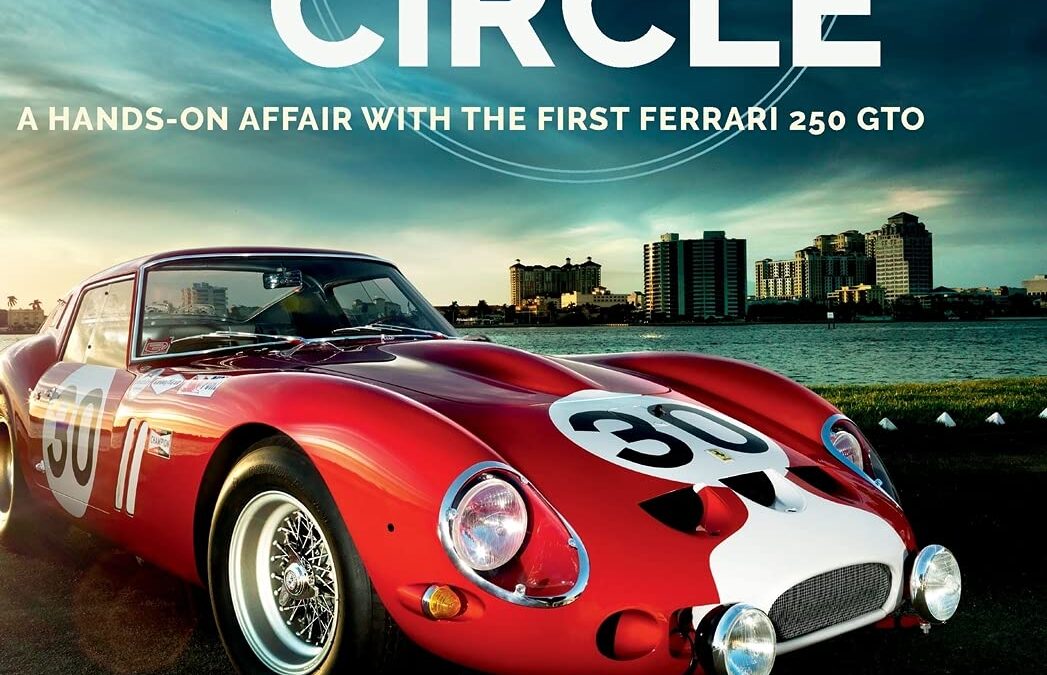
FULL CIRCLE: A Hands-on Affair with the First Ferrari 250 GTO may be the first car memoir – a car revered for its international racing performance and artistic mystique – the first Ferrari 250 GTO, born in Italy in 1962.
It is also the memoir of a man, himself unique – Larry Perkins, a rocket scientist /car racer /artist. His stories chronicle how The Car (a.k.a. “Sophia” named for the elegant Italian bombshell Sophia Loren) pops in and out of his life. These events, and the people associated with them, create a series of full circles in their shared journey.
Full Circle: the past becomes future becomes past, illuminating words to the famous song… “When Everything Old is New Again”.
While Larry was working on the Apollo program to land a man on the moon, and later the Viking Mars Lander program and other space missions, Sophia and Larry had an on-again off-again relationship – an “affair” so to speak – for over 50 years. They found each other in 1963 and formed a surprising dynamic of man-machine synergy. Life was fast and furious, fun and full of trophies. When it seemed destined to be over, Larry sold the Ferrari in 1966 for a mere $3600. The racing duo lost track but were re-united and then parted again. Finally … unbelievably … Sophia found Larry when they were both a little older. With the spark alive, their racing history was re-born in a most spectacular way. Each was transformed by the other.
The memoir starts with a man searching for the perfect race car and develops into a previously unrecorded history of s/n #3223 GT with racing tales. Larry and his wife, Petra, tell of an irresistible GTO attraction and adventures during the exciting era of ’60s sports car racing. (Petra first saw the Ferrari at a memorable race with a fiery crash at Sebring, Florida, when she was 15, but did not meet its driver for 15 more years.)
The authors show the exhilaration of key races and an anecdotal chronology of #3223 with photos, some never seen. They examine what a race driver is really like, the attributes of a highly competitive personality, and the unrelenting dedication to Winning. After all, it was not easy for a small privateer – someone who had started racing relatively late in life (with a consuming day job) – to compete with the likes of racing champions Phil Hill, Pedro Rodriquez, Mario Andretti, and Dan Gurney.
The book emphasizes the value of teamwork. “Doing the impossible” – in racing or rocketry – demands the best of humans working together to render perfect machines. This is an intimate account about the people who made The Car what it ultimately became.
How did this car acquire its timeless aura of mystique?
How cool is it to drive such a powerful and exquisite piece of machinery?
To what degree can a car be considered fine art?
What happened to Larry and why did it turn out to be so spectacular, almost eclipsing his early successes in racing the GTO? When and Where did all this happen?
And best of all, Who are the passionate people that made it happen?
Full Circle: A Hands-On Affair with the First Ferrari 250 GTO answers these questions and provides readers with a thrilling personal play-by-play of racing the very first Ferrari GTO for the very first time.
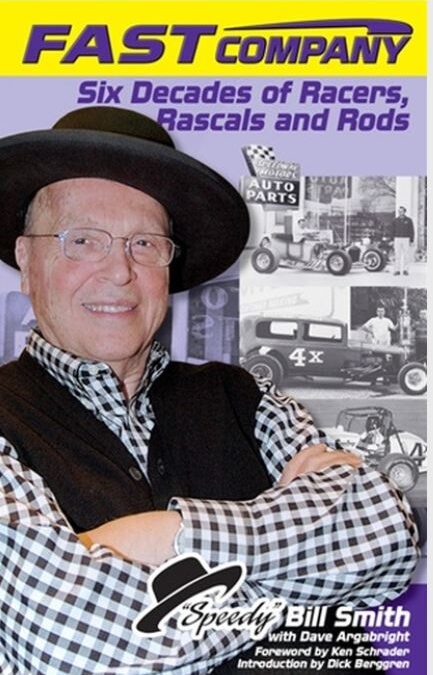
If you’re a racer, a race fan, a hot rodder, a businessman…heck, just about anybody who loves going fast will enjoy Fast Company. Speedy Bill Smith was an icon in both auto racing and the world of automotive performance, and in this book he shares the great stories and experiences of his amazing, unlikely life. He survived a couple of near-death experiences (literally), parlayed $300 into a performance empire, chased race cars and hot rods from coast-to-coast, rubbing shoulders with countless characters and rascals over the past 60 years.
This is an American success story…a little off-color, a little politically-incorrect, and a little over the top. As a car owner, Speedy Bill raced to win, and didn’t mind if he got under the skin of his competitors…in fact, he LOVED getting them fired up. Along the way he won too many races to count, made a ton of friends (and maybe just a few who weren’t so friendly), and rewrote the record books on many occasions.
Over the past ten years, Dave Argabright has teamed up with some of racing’s greatest personalities…Brad Doty, Jack Hewitt, Earl Baltes, Chris Economaki, and Doug Wolfgang. You’ll find Dave’s unmistakable style on these pages, and you’ll hear Speedy Bill’s voice in every word.
Jan Opperman? The real story. Surviving in business? The unvarnished truth about what it takes. Rough-and-tumble racing? Without pulling a punch. Wild and outrageous people? Right here, in the flesh.
More than anything, this is a book that will entertain and inform you. No B.S., no sugar-coating…just the world according to Speedy Bill!

The amazing story of the people who made possible Richard Nobles extreme projects on land, at sea and in the air
Richard Noble’s first attempt to build a record car, Thrust1, ended in a high-speed crash and the sale of the wreckage to a scrapyard. Next came the roller coaster ride of Thrust2, which was developed to attack the World Land Speed Record at Bonneville with Noble at its controls; after innumerable setbacks, including sponsor withdrawals, delays and a rebuild after a 250 mph crash, success was finally achieved with a new record of 633 mph in 1983 at Black Rock Desert in Nevada. Following that, Noble established the UK-based ARV Aircraft company to create an innovative and beautiful metal airplane with safe forward-swept wings and a special Hewland engine, all achieved in 13 months from start-up with no design and little money.
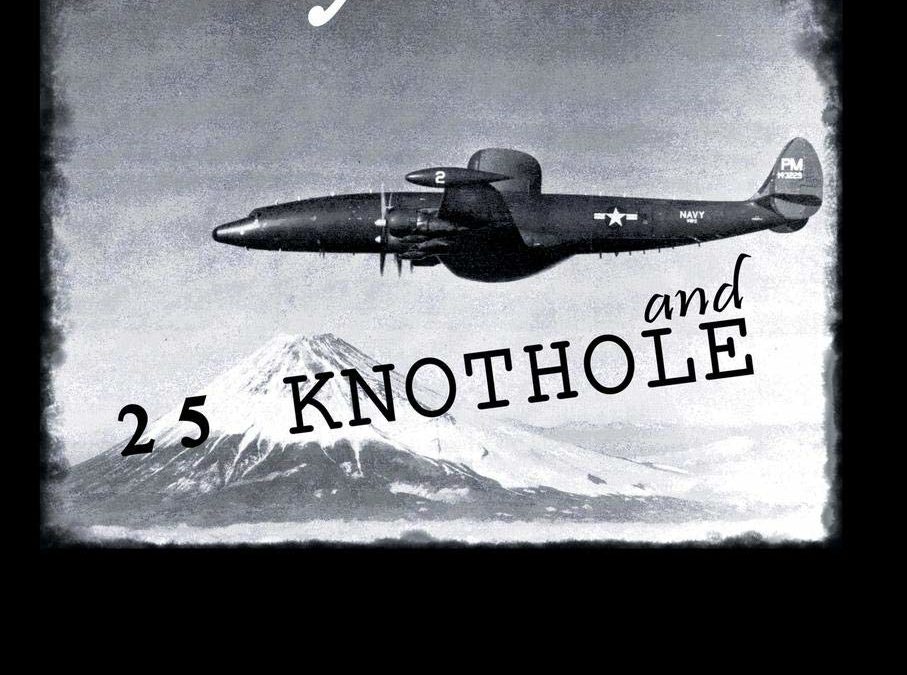
In the early hours of April 17, 1952 World War III nearly began. The Distant Early Warning line (DEW) was still an idea to be addressed by the U.S. government and its top military brass. “Willy Victor and 25 knothole” is about that vital cog of airborne defense against the real threat of a sneak attack (atomic and/ or airborne) against the American mainland. Bruce Jarvis, former naval flight crew member, recounts the operations of his Airborne Early Warning Squadron (AEWRON) experience, flying in a Lockheed Super Constellation Warning Star ( Navy designation Willy Victor-2) in support of the DEW line that became fully operable in the year 1957. It introduces readers to the flyers’ lives during the Cold War, and with little fanfare (but much moxie) recalls the unknown heroism of some of the front line troops in the form of a fictional but typical crew of naval airmen, of the now defunct conflict between Russia and the United States. Although the crew is fictional, their stories are true.
The entire U.S. air defense effort was conceptualized by what is known as the Lincoln Summer Study Group in 1952. It was in response to the panic in NORAD ( the North American Defense Command ) when “bogeys” or aircraft contrails were spotted near northern Canada-the U.S. had neither warning nor the means to combat its threat, if any. Had Kruschechev so chosen, the bogeys could have been the vanguard of a Russian first strike on the heart of America. The stories in “Willy Victor and 25 knothole” include purposes of the AEWRON missions, their importance, the people who flew them, personal anecdotes, their ground crews, their families and women and their sad or happy moments. It shows the human face of a war mostly fought in the rarefied scientific/technological and secret ops realms. Bruce Jarvis has taken good care in writing this book so that Americans may know and not forget the few good men who put their lives on the line during the cold war to protect the United States of America.

In any specialized subject, detailed trivia (technical, or otherwise) is sought and prized by enthusiasts worldwide. Interesting but little-known facts have been part of aviation lore since that industry first began in the early 1900s, and today’s digital aircraft are no different when it comes to this interest. Modeled after successful automotive books on the same theme, this book contains interesting and little-known facts about all aspects of aviation, written by a host of contributing authors, all of whom are well-respected experts in their fields.
This book provides an insightful and in-depth look at aviation history by highlighting many little-known, yet very important aviation facts. Stories are organized by category, such as military, commercial, and sport aviation. Other popular topics include pilots and personalities, aviation movies, TV shows, and model building. More than 100 excellent photographs serve as visual highlights complementing the text.
Although individual aircraft may have interesting technical histories, there are many small details that are actually vital to that aircraft’s success or failure. This book brings those types of facts to the forefront, giving the reader a plethora of compelling data and information that will broaden their understanding and appreciation of aviation in general, plus aircraft and the people who make them fly.

SOLD OUT
At last a dedicated publication that explains the history of the world’s most versatile station wagon, a global workhorse, and comfortable family vehicle. Sweden’s answer to Germany’s people’s car arrived some 20 years earlier and quickly paved the way for safe and dependable vehicles.
The Volvo Estate chronicles the evolution of the Volvo estate car, with every model featured. Whether you are a Volvo lover or just have a general interest in cars, this book offers an informative and interesting look into a car that has had very little media coverage despite its vast global sales success and the affection it holds with so many.

The Italian coachbuilding industry is something unique in the world. Amazing cars, incredible creativity and construction mastery that are impossible to find elsewhere, combined with an unbelievable number of people and companies that have been working for more than a century.
This book, the result of a detailed and huge research lasted many years, covers for the first time with the due historiographic method all the protagonists of this very interesting story. In fact, behind the most famous names, there are hundreds of other companies, workshops, craftsmen, designers that allowed such a big network to develop. The author and his team have been able to list little less than one thousand different entities, the wide part of which was totally forgotten and is re-discovered for the first time after decades.
The book is also introduced by a foreword written by the renowned designer Leonardo Fioravanti and a text by Umberto Eco.
The book is made by 2 large size volumes in slipcase, enriched by more than 3000-period pictures and is the ultimate reference, essential for car styling enthusiasts and automotive historians.
The manufacturing quality is as high as the contents, with a fine printing on heavy matt coated paper and a luxury hardcover in metallic paper.
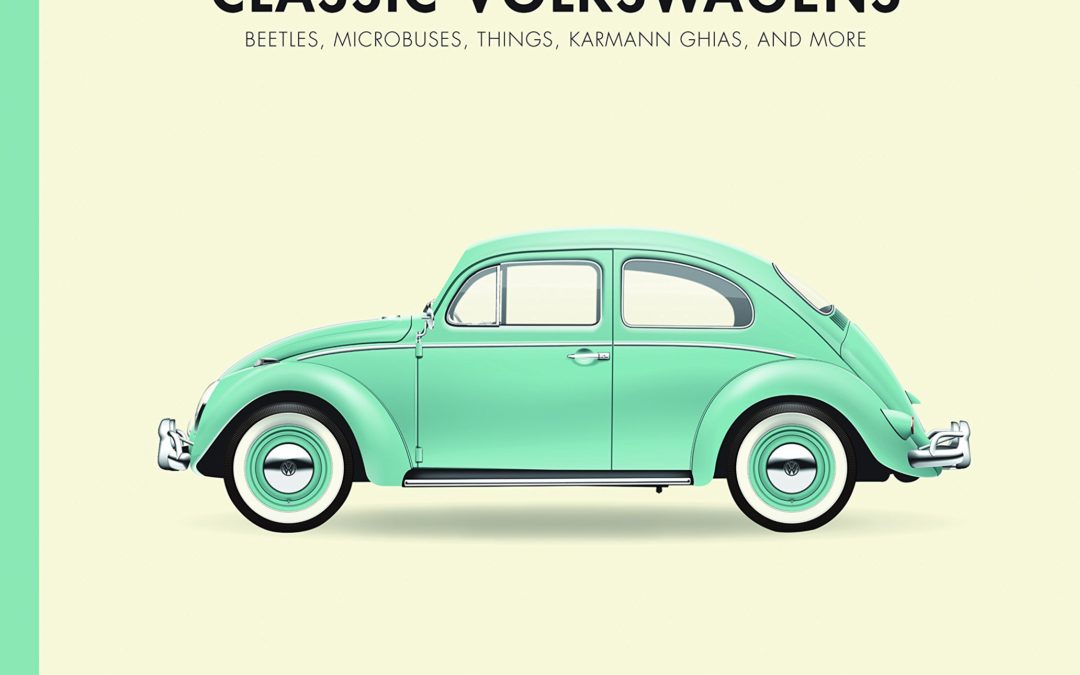
Volkswagen Beetles and their variants are some of the most iconic and easily recognizable cars on the road!
The classic air-cooled Volkswagen Beetle, officially the Volkswagen Type 1, is regarded as one of the most important and well-engineered vehicles of the twentieth century. It was the most popular imported car in America in the 1960s, and before that it enjoyed a humble beginning as “the people’s car” in its native Germany. The Complete Book of Classic Volkswagens encompasses the evolution of the popular Beetle as well as other variations of Volkswagen’s air-cooled cars, vans, and trucks. Thoroughly illustrated, this is an invaluable reference to Volkswagen’s collectible and iconic cars.
The history of VW automobiles is just as colorful as the hues they were manufactured in, and this book illustrates the full story. German automakers originally sought to supply their countrymen with an automobile that was easy to mass produce. By 1938, they finalized the design for the VW “Bug”–the first rear-engined, rear-wheel-drive configured car. In its heyday, the little rounded Beetle was produced at a rate of more than one million per year. Today, with more than 23 million cars built, the Beetle holds the record as the most-produced passenger car of all time. But the Beetle is only one part of the air-cooled Volkswagen story. The rest–from Type 2 vans, pick-ups, and campers to the Type 113 “Super Beetle”–is included here. If you’re the owner of a Volkswagen or if you just love their iconic look and you’re interested in their evolution, this book deserves a place on your bookshelf.

Three quarters of a million people are in a plane somewhere right now. Many millions travel by air each day. For most of us, the experience of being in an airport is to be endured rather than appreciated, with little thought for the quality of the architecture. No matter how hard even the world’s best architects have tried, it is difficult to make a beautiful airport.
And yet such places do exist. Cathedrals of the jet age that offer something of the transcendence of flight even in an era of mass travel and budget fares. Here are twenty-one of the most beautiful airports in the world.
The book features:
Wellington International Airport, ‘The Rock’ shaped like the dangerous cliffs of a local legend
Kansai International Airport, Renzo Piano’s gigantic project built on three mountains of landfill
Shenzhen International Airport, a manta ray shaped terminal putting this booming region on the map
Daocheng Yading Airport, the world’s highest civilian airport in the middle of the Tibetan mountains
Chhatrapati Shijavi International Airport, rising from the slums of Mumbai like a Mogul palace
Queen Tamar Airport, a playfully iconic modern airport nestled in the mountains of Georgia
King Abdulaziz International Airport, the gateway to Mecca resembling a Bedouin city of tents
Pulkovo Airport, mirroring the city of St Petersburg with bridges, squares and art
Berlin-Tegel Airport, ultramodernity, 1970s style
Copenhagen Airport, an icon from the golden age of air travel
Franz Josef Strauß Airport, sober and easy to negotiate, Munich’s model airport
Paris Charles du Gaulle Airport, the brutalist icon that launched the career of airport architect Paul Andreu
London Stansted Airport, Norman Foster’s return to the golden age of air travel
Lleida-Alguaire Airport, a relic of Catalonia’s early 21st century building boom
Madrid-Barajas Airport, Richard Rogers and Antonio Lamela’s calm, bamboo-panelled Terminal 4
Marrakesh Ménara Airport, a blend of 21st century construction and traditional Morrocan design
Santos Dumont Airport, Rio de Janeiro’s modernist masterpiece
Carrasco International Airport, Rafael Viñoly’s design inspired by the sand dunes of his native Uruguay
Malvinas Argentinas International Airport, echoing the mountains and glaciers of Tierra del Fuego
John F Kennedy International Airport, Eero Saarinen’s glamorous jet-age TWA terminal
Spaceport America, a vision of the future in the New Mexico desert
